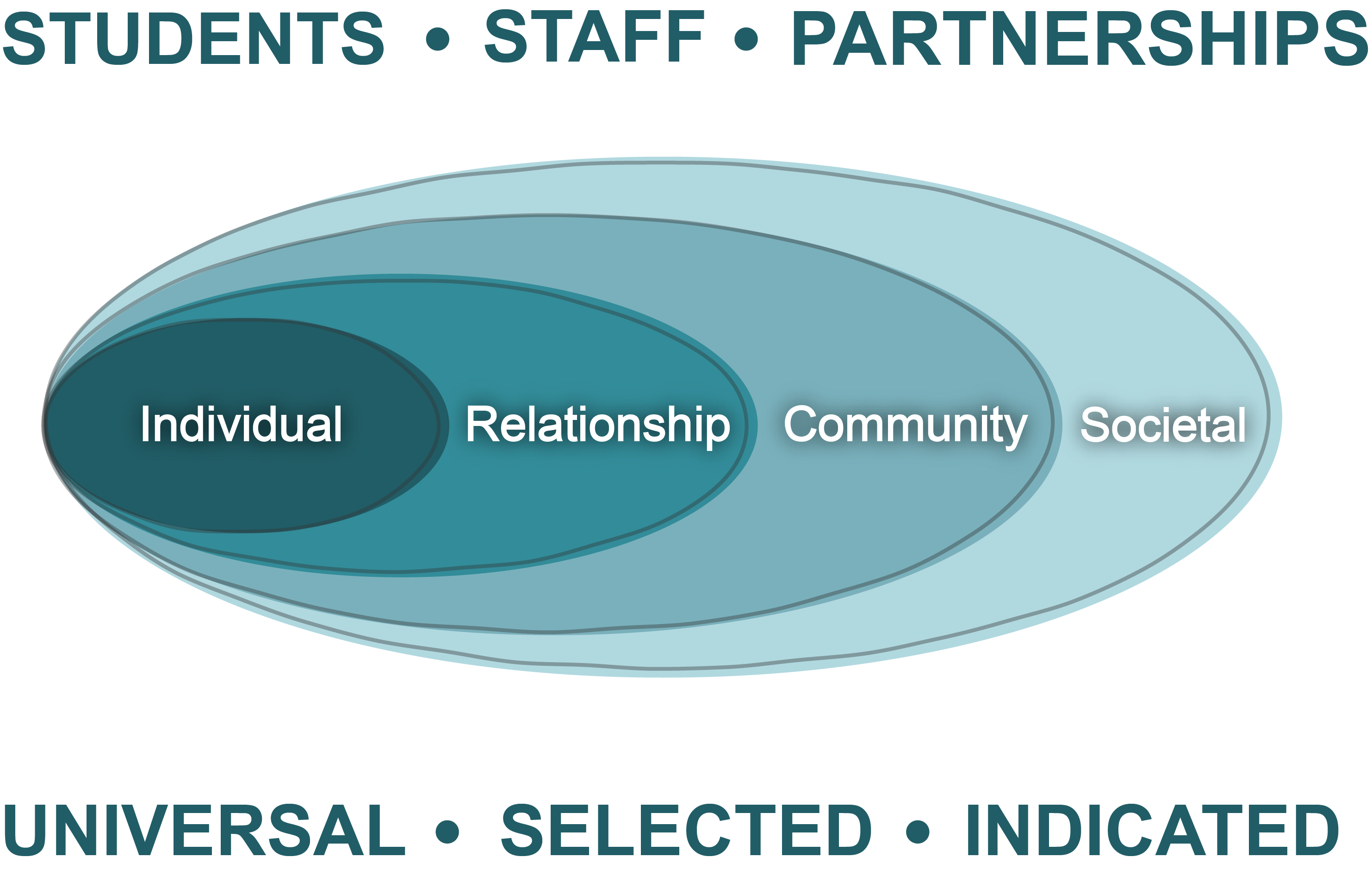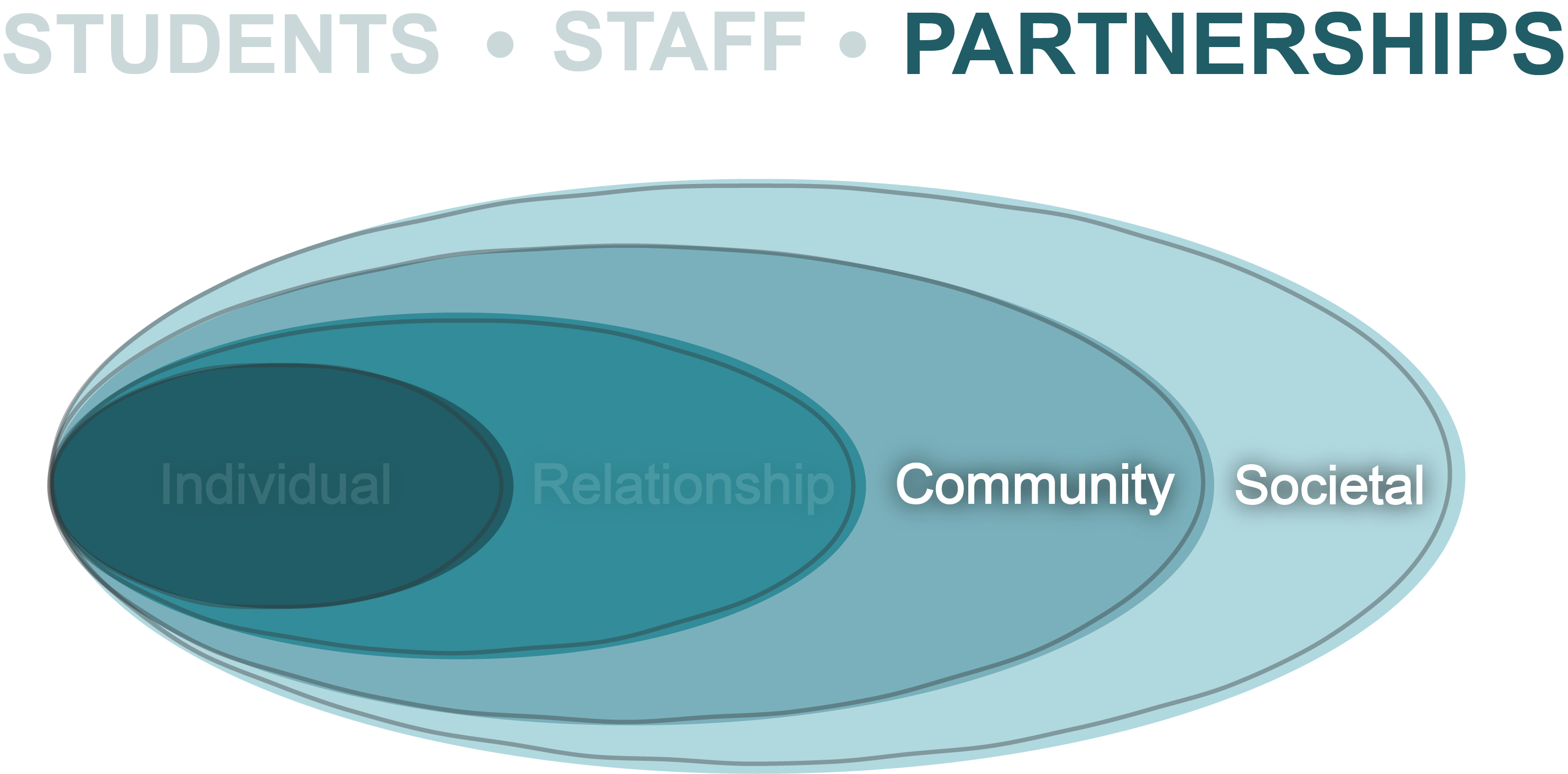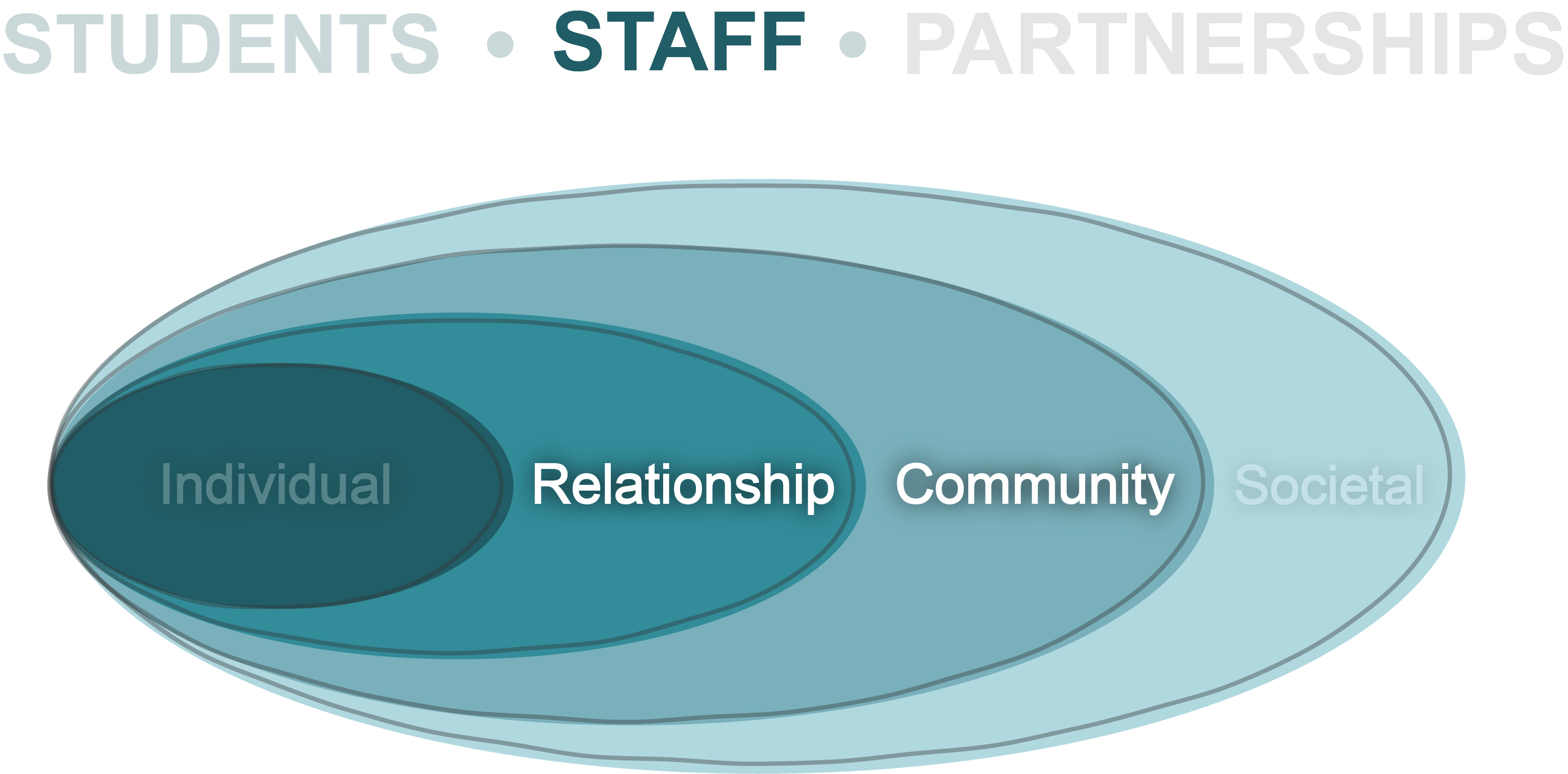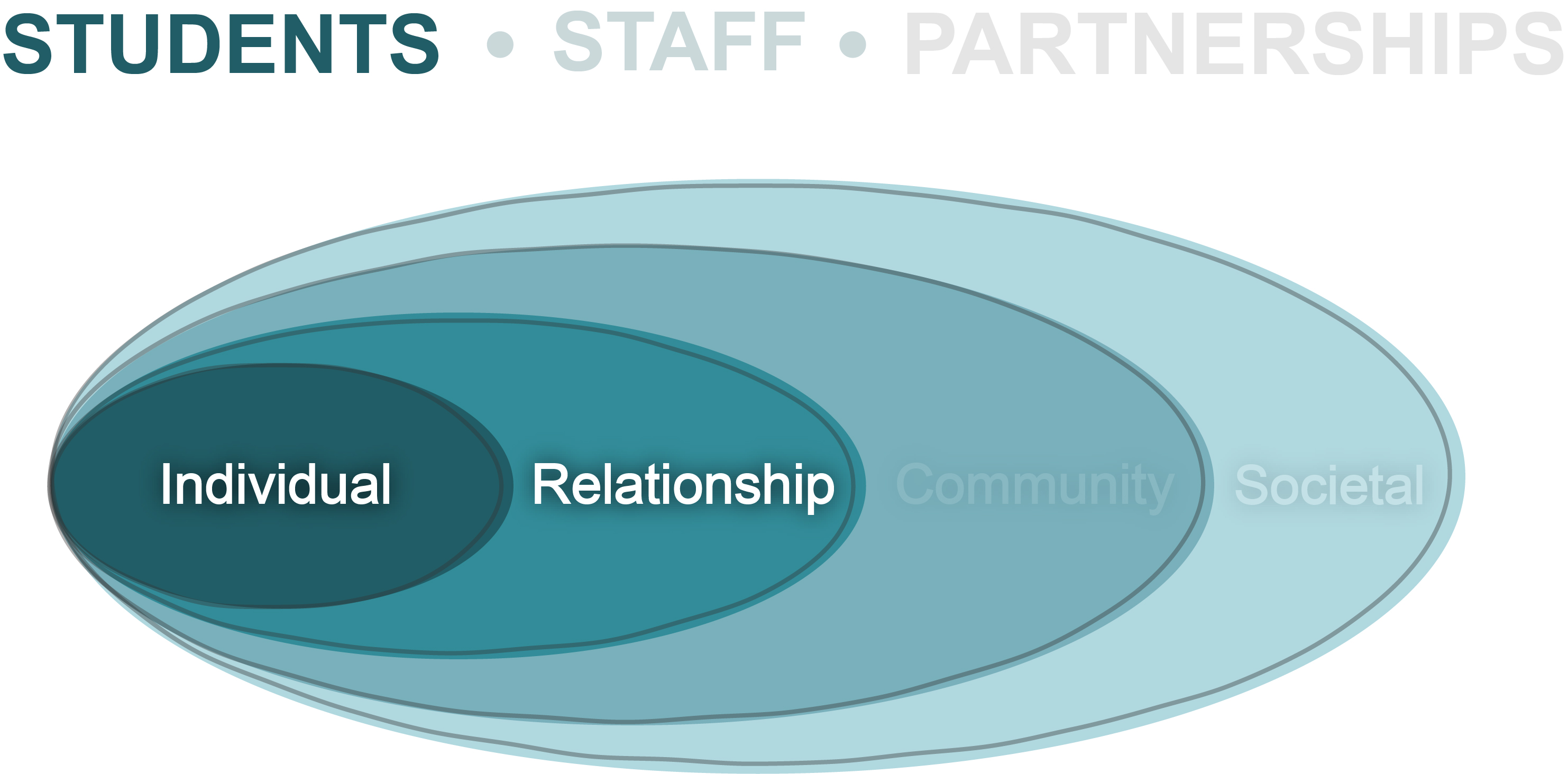Our Framework for Sexual Violence Prevention
Our Framework for Sexual Violence Prevention

We work from within the Socioecological Model (circle graphic), a framework for sexual violence prevention. Individual focuses on specific educational initiatives that change the attitude, behavior, or belief of the individual. Relationship works on changing the social norms surrounding the issue of sexual violence. Community development is building university and community collaboration. Societal is the big picture work: focusing on policy changes, funding allocation, and addressing oppression systemically.
Our structure moves even beyond the Socioecological Model: we weave in the Universal, Selected, and Indicated approaches into the model. This approach allows us to be very intentional with our applications. Specifically, Universal education is a program or event that is campus while, created for consumption by anyone and is not tailored to intersecting identities. Selected education is tailored to the intersecting identities of student groups that have an increased risk of victimization and perpetration. Indicated education is specifically for students who are known to have a history of victimization or perpetration. The purpose is working to prevent future harm.
Finally, we have three main areas of focus: 1) building partnerships, 2) training staff, and 3) training students. These are intentionally structured within our framework.

One of the first things we did to build partnerships was develop our Prevention Collective. This is an open group of students, staff, faculty, and community partners who meet once a month. The group’s purpose is simple, to bring partners to the table. With 20 different department and groups represented each month, The Prevention Collective agreed to collaboratively create a core set of presentations to ensure continuity in messaging.
Any department could then go through a “train the trainer” workshop to learn to facilitate the presentations. Then, if that department was contacted by a student group who they had built a relationship with, they were welcome to facilitate the training. Everything didn’t have to flow through SAPEC, but the information had to be consistent and in keeping with best practices. This was well received. It empowered some and removed the burden of training from others. We have trained over 100 staff, faculty, and grad students to facilitate Jayhawks Give a Flock. We have trained 5 staff members to facilitate Consent @ KU.

The Prevention Collective agreed that training the staff was a priority. In order to educate our students, it’s important that staff show continuity when addressing sexual violence: respond consistently and compassionately to survivors when they disclose and role model pro-social bystander intervention. Continuity and solidarity in messaging and responding to sexual violence evolves social norms and promotes collaboration.
When training staff, we are very intentional per department, tailoring the presentations and workshops to departmental needs and real-world scenarios, utilizing both Universal and Selected educational frameworks. We want to create a foundation and commonality for all staff and then build the skills for staff who may have a greater exposure to both survivors and offenders.

We focus on developing a comprehensive primary prevention curriculum that is tailored to the needs of the students. Our center was born from the voice of student activism and demands; we take that origin very seriously. Our philosophy is “nothing for us without us.” So all the programing that comes out of SAPEC is created or influenced by students.
Our student programs not only focus on effecting change on the individual level but also work to cultivate student thought-leaders and mentors who could change the social norms surrounding sexual violence within their social circles. Thus, we are very intentional in how presenters connect with students, only presenting in small groups, never larger than 35. When applicable we break the trainings down even smaller and train cohorts together to increase peer accountability and normalize learning objectives.